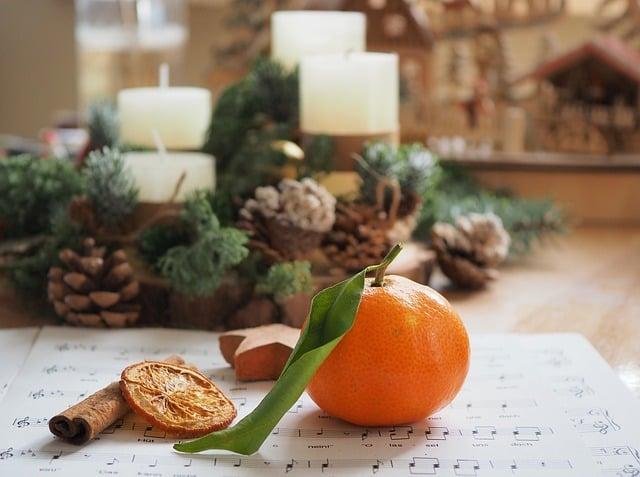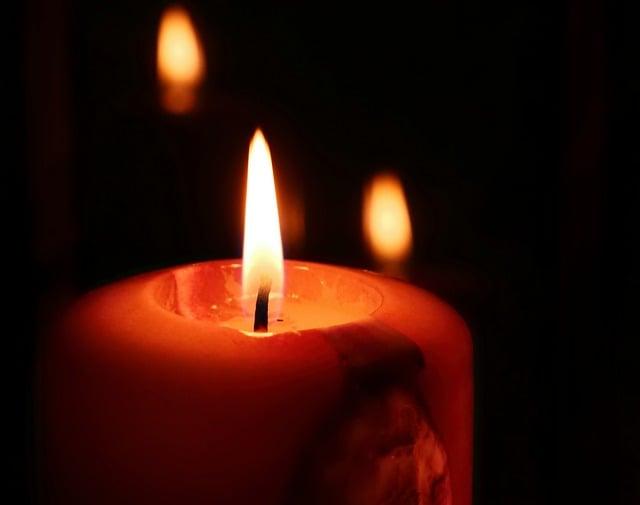As the first frost kissed the ground, a small village prepared for Advent. Each home adorned a simple wreath of evergreen, its circular shape symbolizing eternity. In the center, four candles stood tall, waiting to be lit. Each week, a new flame flickered to life, casting a warm glow against the winter chill. Villagers gathered, sharing stories and laughter, their hearts ignited with hope. The wreath, a reminder of the promise of light in darkness, united them in anticipation, as they counted down to a joyous celebration.
Table of Contents
- Understanding the Meaning Behind the Advent Symbol
- Exploring the Visual Elements of the Advent Wreath
- Incorporating Advent Symbols into Modern Celebrations
- Practical Tips for Creating Your Own Advent Traditions
- Q&A

Understanding the Meaning Behind the Advent Symbol
The Advent symbol is rich with meaning, serving as a visual representation of the anticipation and preparation for the celebration of Christmas. Traditionally, the Advent wreath, often made of evergreen branches, signifies eternal life and hope. The circular shape of the wreath reminds us of God’s unending love and the promise of salvation. Each candle placed within the wreath holds its own significance, illuminating the path toward the birth of Christ. As the weeks progress, the lighting of each candle symbolizes the increasing light of Christ entering the world, dispelling darkness and bringing joy to the faithful.
In addition to the wreath, other symbols associated with Advent include the use of colors such as purple and pink. **Purple** represents penance and preparation, while **pink**, often seen on the third Sunday, signifies joy and the nearing celebration of Christ’s birth. The **nativity scene** also plays a crucial role during this season, reminding believers of the humble beginnings of Jesus. Each of these symbols invites reflection and encourages individuals to engage in spiritual practices, fostering a deeper connection to the true meaning of Christmas as a time of hope, love, and renewal.

Exploring the Visual Elements of the Advent Wreath
The Advent wreath is a captivating symbol that beautifully encapsulates the essence of the Advent season. Traditionally circular, the wreath represents **eternity** and the unending love of God. Crafted from evergreen branches, it serves as a reminder of **hope** and **renewal**, symbolizing the promise of everlasting life. Each element of the wreath is imbued with meaning, from the rich green foliage that signifies growth and vitality to the candles that illuminate the path toward Christmas. The four candles, typically arranged around the wreath, each represent a week of Advent, inviting reflection and anticipation as the light gradually increases with each passing week.
As the candles are lit, they evoke a sense of **progression** and **preparation**. The first candle, often purple, symbolizes **hope**; the second, also purple, represents **peace**; the third candle, usually pink, signifies **joy**; and the fourth, again purple, embodies **love**. The addition of a white candle in the center, lit on Christmas Eve or Christmas Day, represents the **Christ candle**, illuminating the culmination of the Advent journey. This visual tapestry not only enhances the spiritual atmosphere of the season but also invites families and communities to gather, reflect, and share in the anticipation of the celebration of Christ’s birth. Each flicker of light serves as a reminder of the profound themes of the season, encouraging a deeper connection to the traditions and meanings that Advent holds.

Incorporating Advent Symbols into Modern Celebrations
As the season of Advent approaches, many people seek to blend traditional symbols with contemporary celebrations, creating a rich tapestry of meaning and joy. One of the most cherished symbols is the **Advent wreath**, which features four candles representing hope, peace, joy, and love. Each week, a new candle is lit, inviting reflection and anticipation as the days draw closer to Christmas. Incorporating this symbol into modern festivities can be as simple as placing a wreath on your dining table or using it as a centerpiece during gatherings, allowing family and friends to share in the lighting ritual and its significance.
Another powerful symbol is the **Advent calendar**, which has evolved from its religious roots into a fun and interactive way to count down the days until Christmas. Today’s calendars can be filled with treats, small gifts, or even acts of kindness, encouraging a spirit of giving and gratitude. By creating personalized Advent calendars, families can incorporate their own traditions and values, making each day a unique celebration. Additionally, using **nativity scenes** in home decor can serve as a reminder of the season’s true meaning, inviting conversations about faith and community during holiday gatherings.

Practical Tips for Creating Your Own Advent Traditions
Creating your own Advent traditions can be a delightful way to enhance the anticipation of the holiday season. Start by **choosing a theme** that resonates with your family, whether it’s focusing on kindness, gratitude, or the spirit of giving. You might consider crafting a personalized Advent calendar filled with small notes or activities that encourage family bonding. For example, each day could feature a different act of kindness, such as baking cookies for neighbors or writing letters to loved ones. This not only builds excitement but also instills meaningful values in your children.
Another idea is to incorporate **storytelling** into your Advent celebrations. Each evening, gather around to read a chapter from a holiday-themed book or share stories from your own childhood. You could also create a “light of hope” ritual by lighting a candle each week, symbolizing the growing light as Christmas approaches. To make it even more special, consider involving your children in the preparation of these traditions, allowing them to contribute their own ideas and creativity. This collaborative effort can deepen their connection to the season and create lasting memories for years to come.
Q&A
-
What does the Advent symbol represent?
The symbol of Advent primarily represents the anticipation and preparation for the celebration of the birth of Jesus Christ. It signifies hope, peace, joy, and love as believers await the coming of Christ.
-
What are the common symbols used during Advent?
- Advent Wreath: A circular wreath with four candles, representing the four weeks of Advent.
- Candles: Each candle symbolizes a different theme: hope, peace, joy, and love.
- Colors: The traditional colors are purple (for penitence and royalty) and pink (for joy on the third Sunday).
-
How is the Advent wreath used?
The Advent wreath is typically displayed in homes and churches. Each week, a new candle is lit, often accompanied by prayers and readings, to mark the progression toward Christmas.
-
Why is the Advent season important?
The Advent season is important as it encourages reflection, spiritual growth, and a deeper understanding of the significance of Christmas. It invites individuals to prepare their hearts and minds for the arrival of Christ.
As we embrace the season of Advent, let the symbols guide us through reflection and anticipation. Each candle, each color, and each moment invites us to prepare our hearts for the joy and hope that Christmas brings. Embrace the journey!

大家好,我是彼得潘,專業的手法身體治療師。我喜歡探索和研究各種主題,並透過與人工智慧的合作分享專業、實用、有趣的文章。我們定期進行人工審核,以確保內容的準確性。如果您發現文章中有任何不準確的地方,請隨時與我們聯繫,我們會及時糾正。您可以透過 [email protected] 與我們聯繫。



